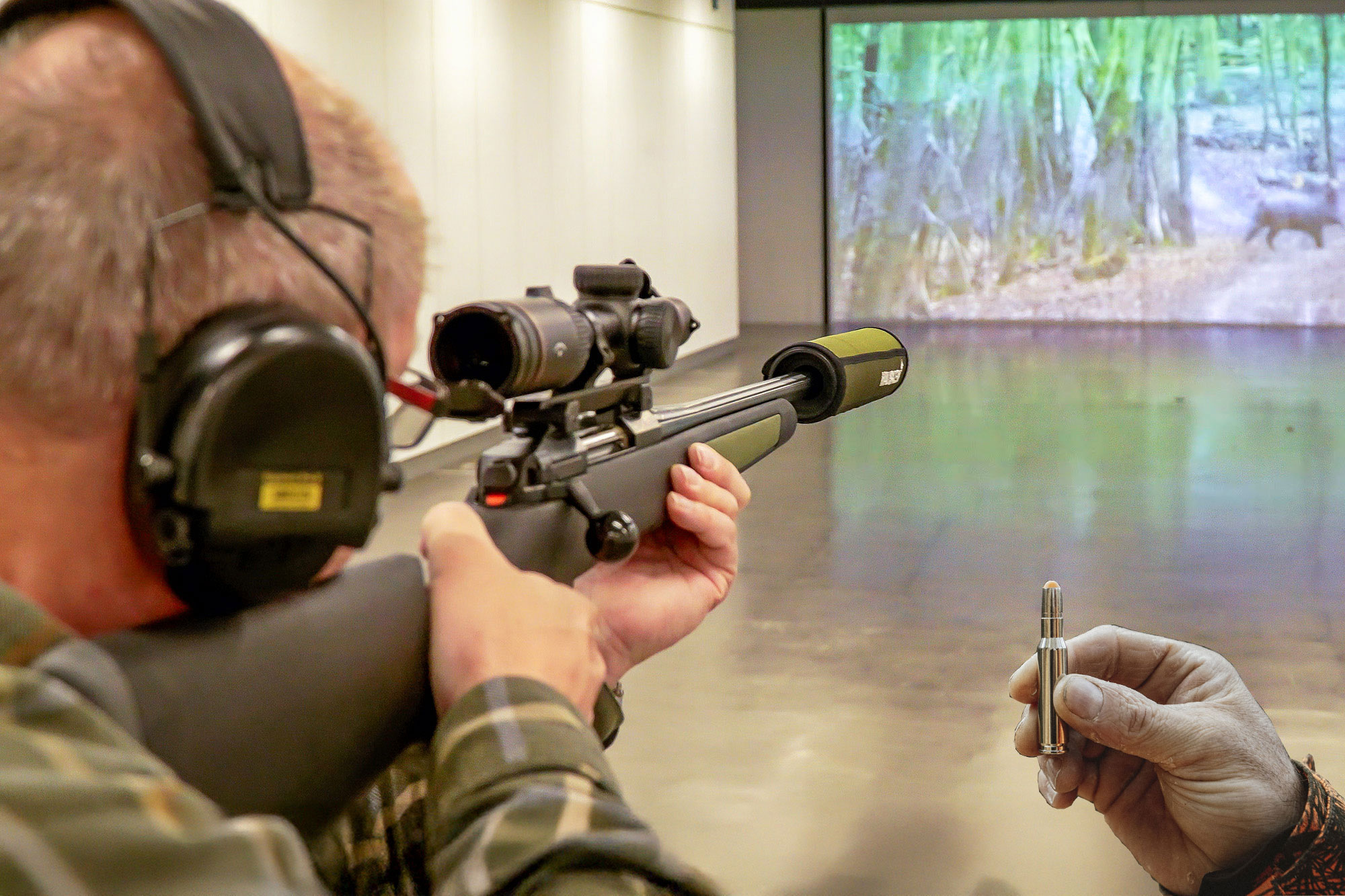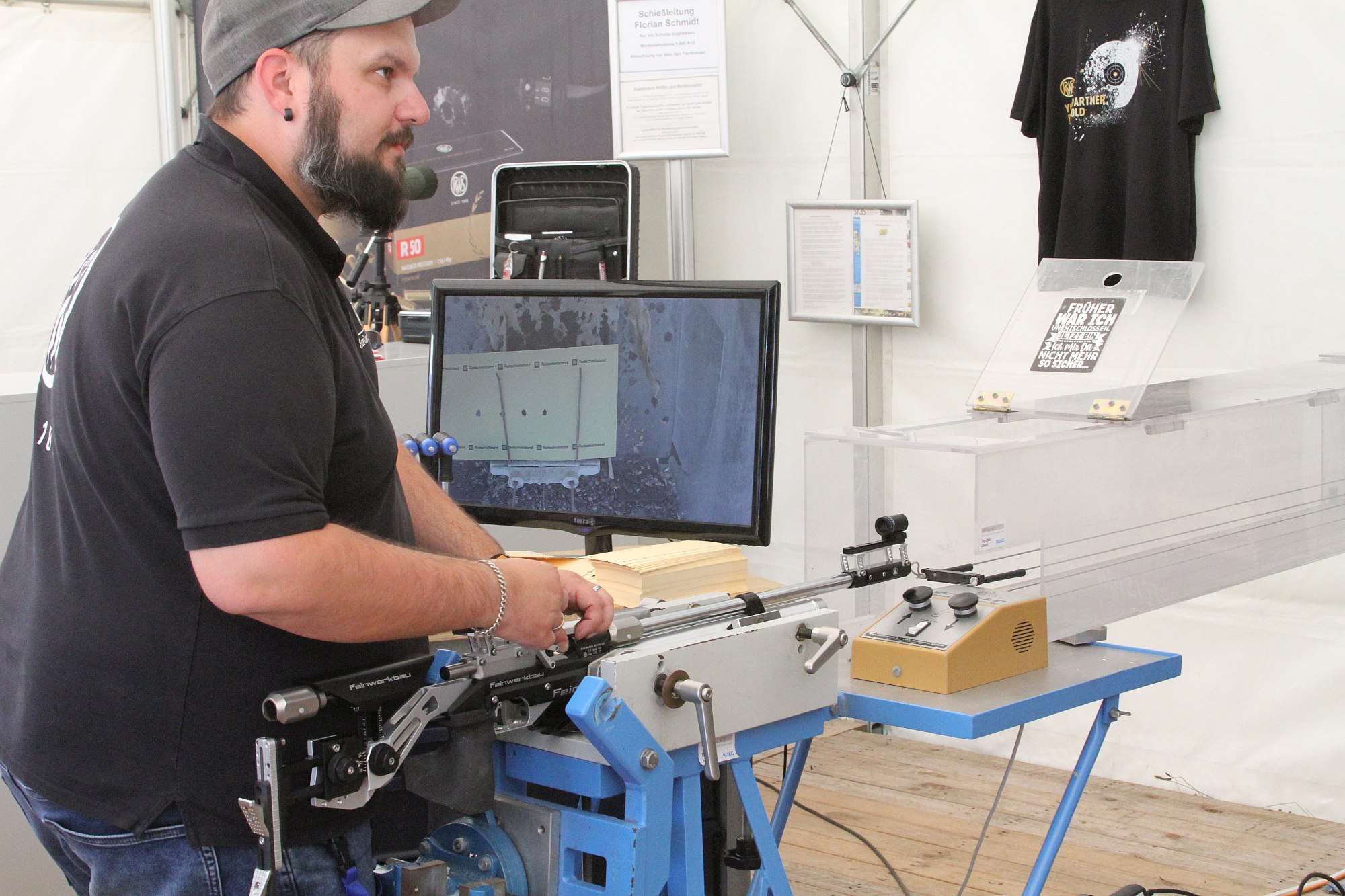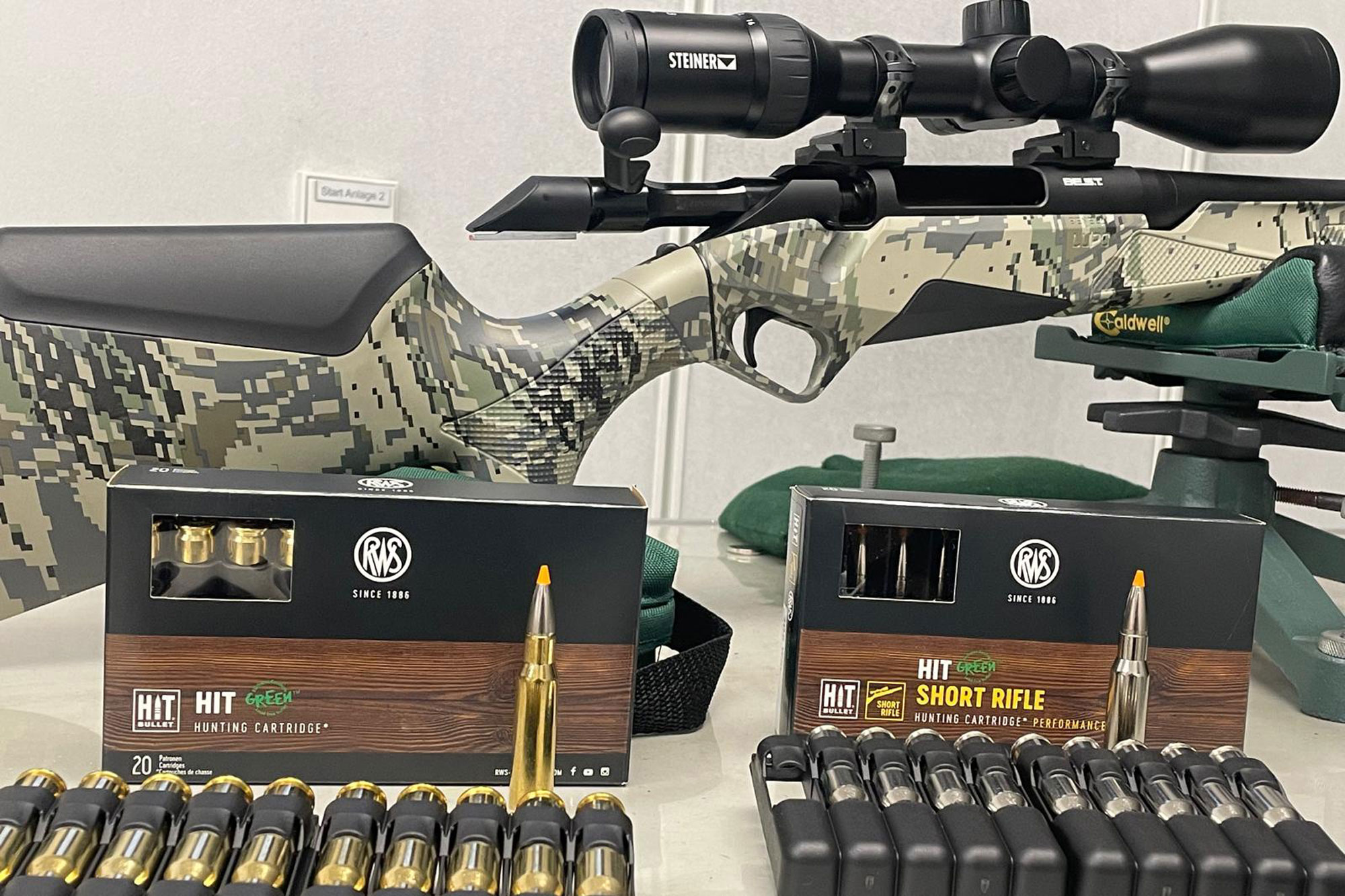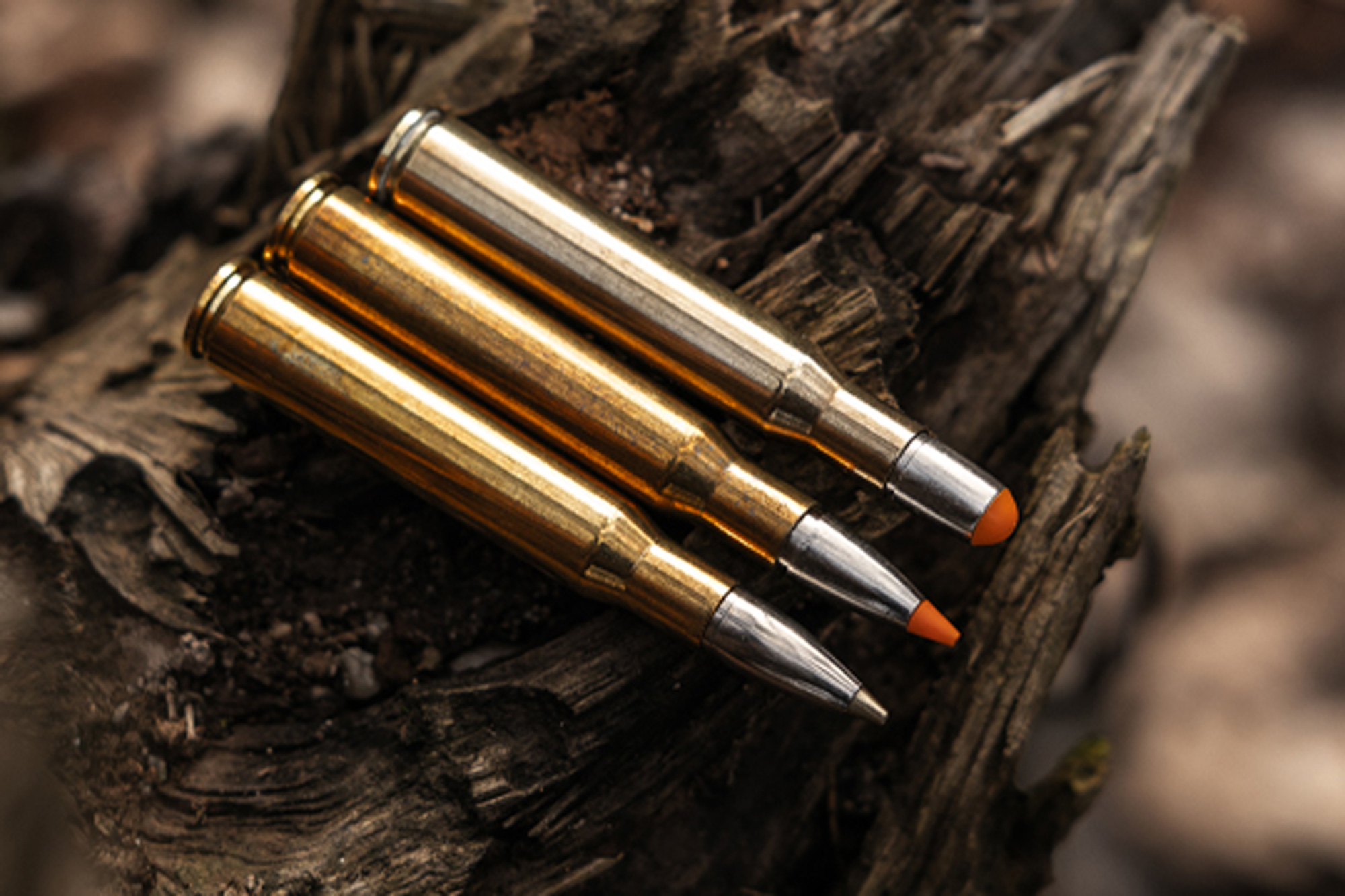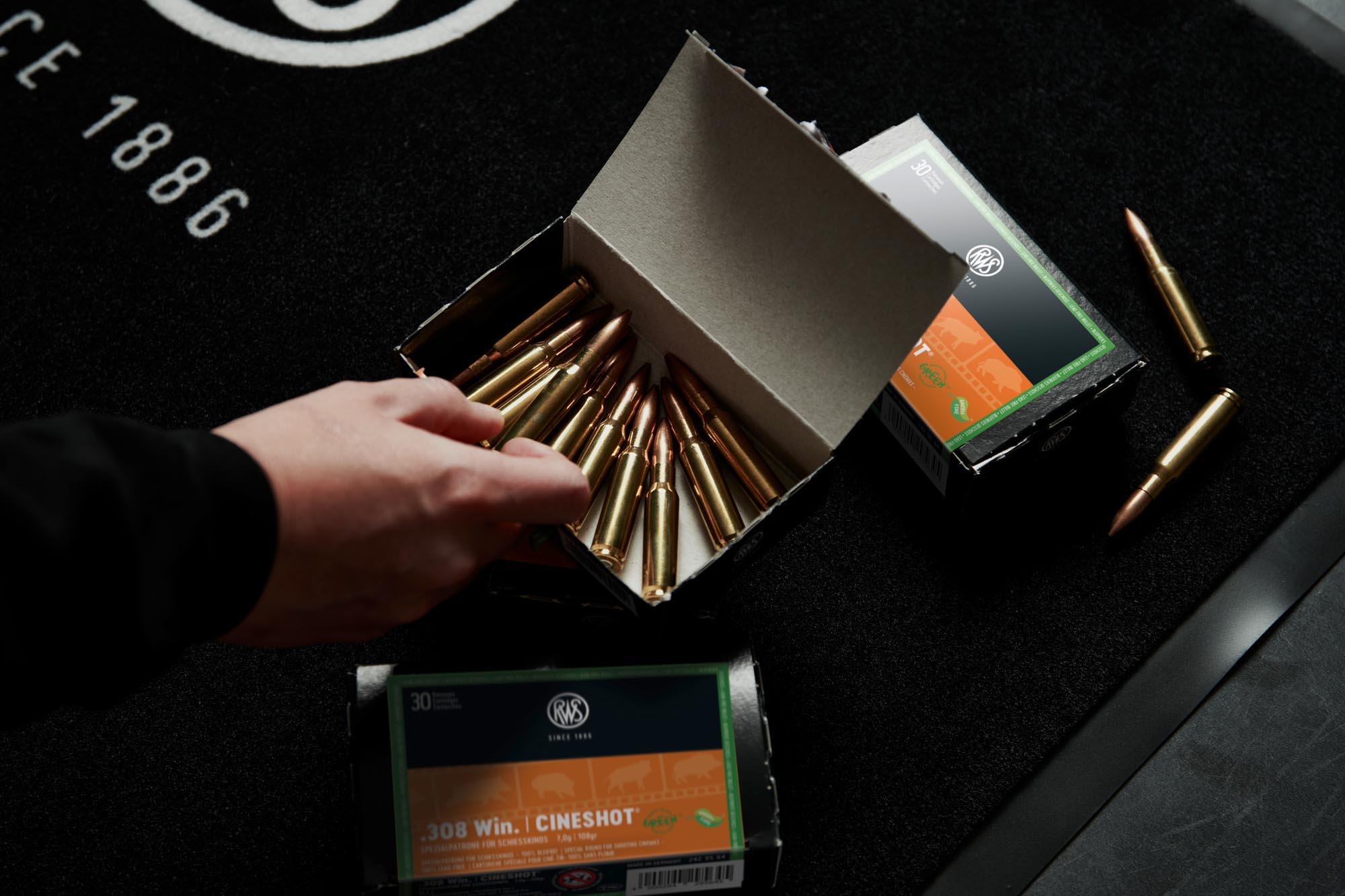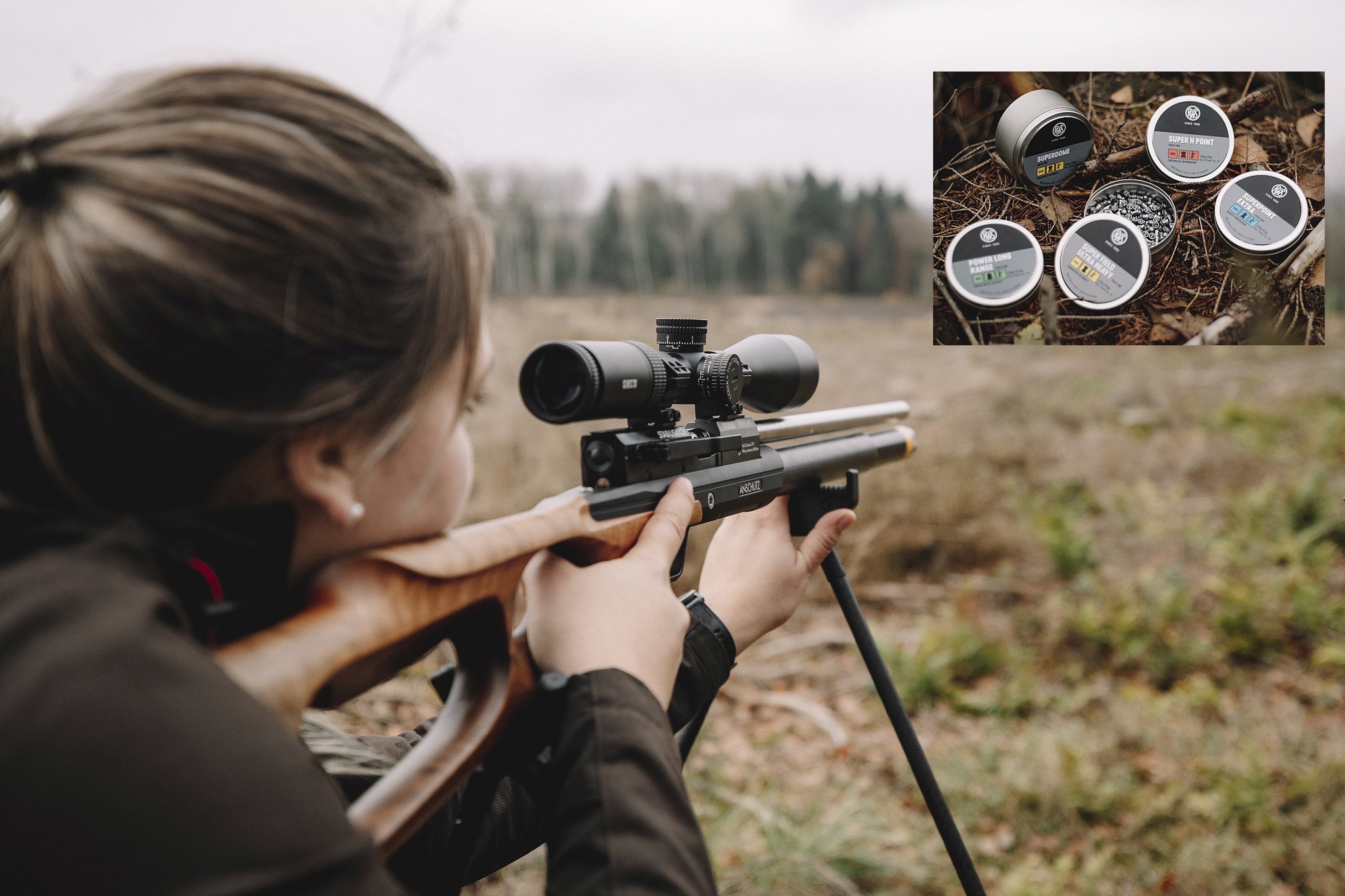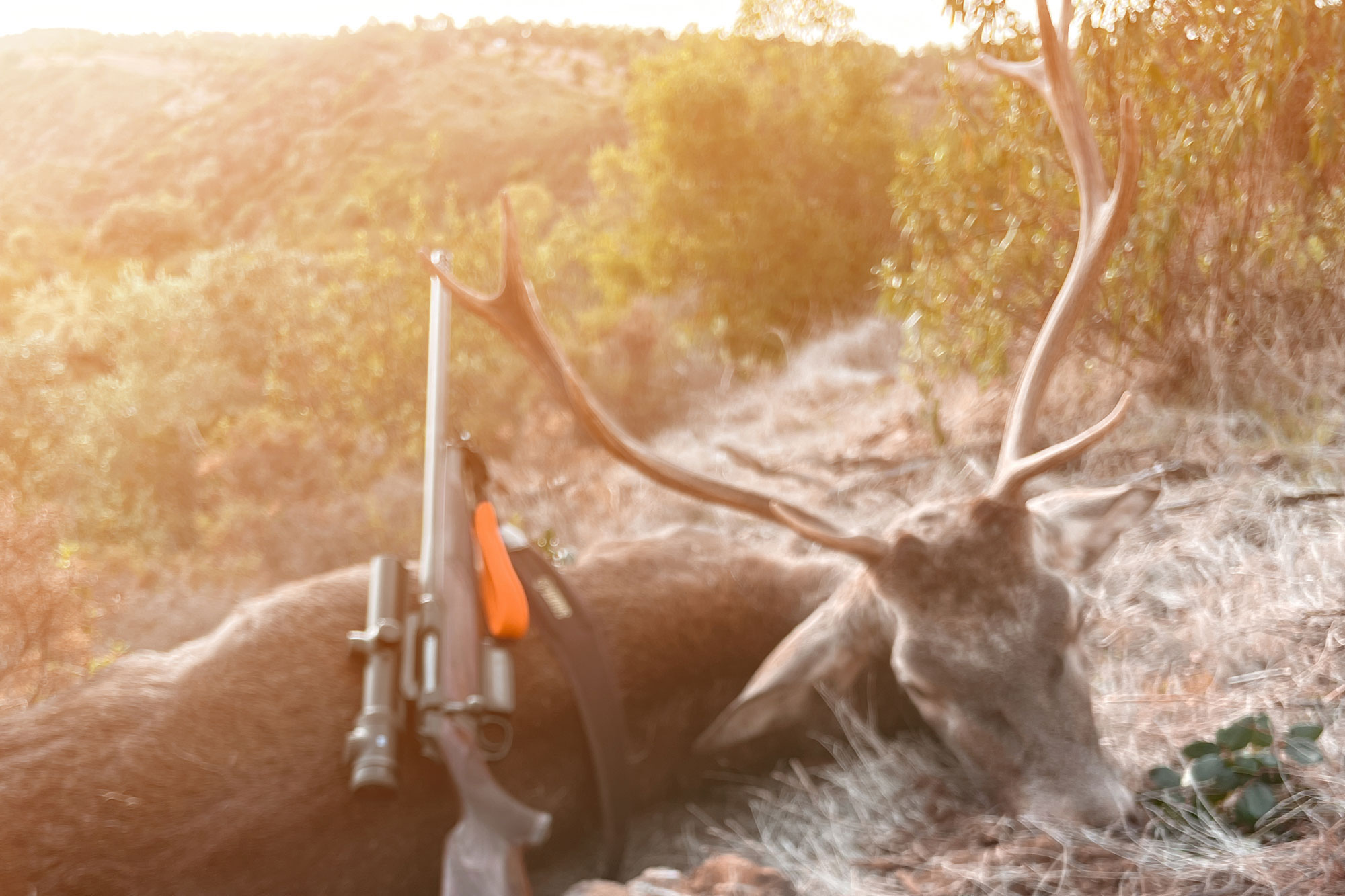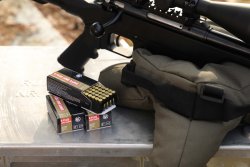
Shooting at long ranges well beyond the usual maximum of 300 meters is very demanding. This starts with the appropriate caliber and bullet selection, suitable optics with high magnification and, above all, large elevation and windage adjustment ranges, appropriate knowledge of external ballistics, and suitable shooting ranges. The last point in particular is the reason why long-range shooting is only slowly gaining ground in Europe.
So it would be a blessing if long-range shooting with centerfire rifle cartridges could be scaled down, so to speak, so that even 300-meter ranges would allow a long-range feeling. This is exactly what has been done for several years in the land of opportunity with the .22 LR rimfire cartridge. The main reason for this in the USA, however, is probably not the lack of correspondingly long shooting ranges, but much more cost-effective training. Because regardless of whether the bullet of a .375 CheyTac or that of a .22 LR is sent on its way, both bullets are subjected to the same external ballistic forces, but with different effects. Another challenge when shooting at different distances is the reliable control of the target optics, i.e. the parallax-free adjustment of the correct distance and the compensation of the curved trajectory and crosswind through the elevation and windage adjustments. Of course, on the surface, the main concern is to shoot as far as possible and then hit the target.
However, as the shooting distance increases, this also requires increasingly powerful calibers and optics, larger firearms and longer shooting ranges. However, it is also possible to use a weak cartridge for this purpose – in the case of the .22 LR, for example, anything beyond 100 meters is considered long range. Under certain conditions, the .22 Long Range therefore appears to be an interesting and above all cost-effective option, even if perhaps only used as a training option. This is exactly what prompted the German RWS developers from Fürth to open up to the subject and develop a special long-range load in .22 LR.
RWS R Plus Long Range: the new rimfire cartridge in detail
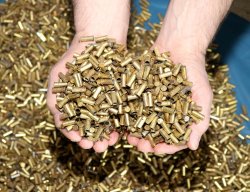
The new RWS R Plus Long Range thus extends the premium range of R50 and R100 cartridges upwards in terms of distance. According to RWS, the operating range should be over 200 meters. The market launch is planned for the 3rd quarter of 2022, and we have already been able to test the new load extensively and exclusively at six distances from 50 to 300 meters. And this was done in a way that is unique in the history of all4shooters.com: on the one hand, it involved a mammoth test lasting several days with over 3,000 rounds in total – you have read correctly: our testers Pascal Conter and Chris Hocke fired 3,000 rounds, the figure is not a typo.
On the other hand, the RWS cartridge that triggered the test was more or less a "prototype", as such very early test samples are called in the automotive industry: when the testers arrived at the RWS developers in Fürth, they saw white .22 cartridge boxes still without any "correct" label. You don't see that every day. So they pulled out their smartphones and held them up before the identification labels prescribed by the CIP were applied to the .22 cartridge boxes and the testers could take them over.

If a bullet is to be as accurate as possible at long ranges, disturbing influences such as wind sensitivity and the deceleration caused by air friction must be kept as small as possible. This is best achieved by increasing the bullet mass. This increases the mass, known in ballistics as the cross-sectional density, in relation to the bullet cross-section. A higher mass on the same cross-section reduces the deceleration due to air friction. The bullet thus loses velocity more slowly, reaches the target more quickly and the trajectory is flatter, so the projectile flies more stably. Crosswind sensitivity can also be reduced by a high mass, but ideally paired with a short projectile, which offers little surface area for attack. Therefore, RWS developers designed a lead bullet with a mass of 2.79 grams, or 43 grains. Another point to reduce bullet flight time and interference is to increase muzzle velocity. This can be increased by special propellant powders and priming. However, RWS must adhere to CIP specifications, which allow a maximum gas pressure of 1,700 bar for the .22 LR. Nevertheless, RWS says it was able to raise muzzle velocity to 355 meters per second. The test from the CZ 457 Long Range Precision (LRP) bolt-action rifle exceeded the manufacturer's specifications by as much as 6 meters per second on average.
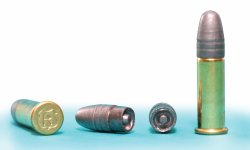
As a last important point, the bullet shape influences the external ballistics. In the supersonic range, the so-called Mach's cone forms at the tip of the projectile. The air displaced by the bullet tip must escape faster than its own speed of sound (343 m/s at 20 degrees Celsius). Therefore, the air forms a pressure cushion on the bullet surface that opposes the bullet's motion, slowing it down. For this reason, match bullets also have a slender tip geometry. The braking forces at the rear of the bullet are very low. In the subsonic range, this is exactly the opposite. A Mach's cone can't form because the air displacement through the bullet takes place at subsonic velocity.
The main braking forces now take place at the rear of the projectile in the form of the so-called base drag. This creates a negative pressure at the rear due to the bullet flight, which counteracts the bullet movement. The new RWS cartridge type R Plus Long Range starts at supersonic velocity and drops into the subsonic range after about 25 meters of flight. The designers therefore had to optimize the rear of the bullet in particular. The new patented bullet shape features a conical tail, which adds mass on the one hand and reduces base drag on the other.
Test setup for testing the rimfire cartridges with the CZ 457 LRP
In order to determine the actual performance of the ten CZ 457 LRP loadings used for the test and thus to be able to compare the individual cartridge types directly with each other, the testers decided to shoot all distances on an indoor shooting range. At the 300 distance, depending on the load, the bullets travel for a second or more. With the low mass of about 2.6 g, the projectiles are very susceptible to crosswinds. Barely visible or noticeable air movement can greatly influence the groupings during this flight time, especially if the wind is not continuous. The second point that seemed important to the testers was the sorting of the cartridges. Different manufacturers use different lead alloys and also bullet greases. Thus, one load was shot through at all six distances. Only then did the testers switch to the next load.
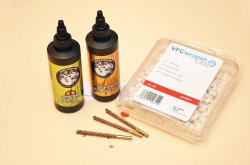
After each change of load, the aim was to clean the barrel to bring it back to its original condition as far as possible. Since the "correct" cleaning is known to be more of a philosophical than a technical question, the team of examiners inquired in advance with various ammunition manufacturers and competition shooters. As expected, there were no uniform statements and thus no clear recommendation. After some deliberation, the testers decided against a purely mechanical cleaning with bronze brushes, but instead opted for a combined chemical and mechanical cleaning. For barrel cleaning, Bore Tech Rimfire Blend was used for lead bullets and Bore Tech Copper Remover for the copper-plated lead bullets. In doing so, the testers cleaned according to the manufacturer's instructions.
For this purpose, they soaked 4 VFG felts with the respective cleaning agent and pushed them through the barrel. They then had to wet a suitable bronze brush with the agent and push it through the barrel bore ten times. The lead solvent took about 10 minutes to work in, while the copper solvent took just under half that time. Finally, the inside of the barrel was cleaned with dry felts until no more dirt could be detected. In view of the high shot volume, cleaning had to be carried out methodically time and again. For this purpose, the testers used solvents from Bore Tech, brushes and matching VFG felts. However, before checking the new load for accuracy, the testers fired 5 to 10 cartridges to "acclimate" the barrel to the new bullet, so to speak.
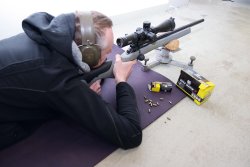
Since its introduction at the end of the 19th century, the .22 LR was intended for short ranges of 50, maximum 100 meters; the knowledge of this common operational range of the rimfire cartridge is part of the backpack knowledge of every shooter. Now this test exceeded the commonly used maximum distance by a factor of three. Therefore, the testers reckoned with strongly fluctuating groups, especially at the longer distances. The reason for this is the rather poor ratio between propellant and primer ignition material. Slight fluctuations in the priming mass and its distribution in the case have a strong influence on the internal ballistic burn characteristics. In short, even small variations in the primer mass lead to significant variations in the muzzle velocity and this, in combination with long flight times, leads to strongly varying groupings. Therefore, three groups of five cartridges each were shot for each load and distance. The value given in the table below thus contains the average of the three individual values. In order for the shooter to be able to make his own hit observations at the longer distances, a GPO Spectra 6x 4.5-27x50 riflescope was mounted. However, this requires very good target illumination in the form of spotlights.
Test results: RWS R Plus Long Range compared to 9 other loads. Groupings at 50, 100, 250 m
| No | Factory Cartridge | Group
at 50 m (mm) | Group
at 150 m (mm) | Group
at 250 m (mm) |
| 1. | 38 gr
(2.46 g) Blazer LRN | 32 | 117 | 264 |
| 2. | 40 gr
(2.59 g) CCI Mini Mag CPRN | 26 | 72 | 161 |
| 3. | 40 gr
(2.59 g) Eley German Match | 22 | 56 | 165 |
| 4. | 40 gr
(2.59 g) Federal Gold Medal Target | 29 | 54 | 131 |
| 5. | 40 gr
(2.59 g) Fiocchi Ultrasonic CPRN | 25 | 147 | 208 |
| 6. | 40 gr
(2.59 g) Lapua Center-X | 25 | 56 | 122 |
| 7. | 40 gr
(2.59 g) RWS Rifle Match S | 24 | 67 | 133 |
| 8. | 40 gr
(2.59 g) SK Rifle Match | 19 | 63 | 118 |
| 9. | 40 gr
(2.59 g) SK Long Range | 18 | 66 | 136 |
| 10. | 43 gr
(2.79 g) RWS R Plus Long Range | 20 | 51 | 105 |
| Notes/Abbreviations:
Group (mm) = Grouping diameter in millimeters, 50, 100, 150, 200, 250, and 300
m shooting distances, rifle fired from benchrest. Data referred to five-shot
groups (average of three groups). For groups at 100, 200 and 300 meters, see
note below. | ||||
Wrapping up: this is what the RWS R Plus Long Range in .22 LR can offer at long ranges
Although the testers shot all distances indoors, i.e. under ideal conditions, the measured groupings show two points in particular very clearly: at a distance of 100 meters, it is already clear which load is suitable for long and accurate shots. If the same load and distance result in widely varying groups, even if there are a few good groups, then the cartridge is not suitable for long-range shooting. Consistent and reproducible grouping diameters are better here, even if these should be somewhat larger than other individual groupings.
In this point, the new RWS R Plus Long Range was ahead of the other test loads, even though it was only good enough for 3rd place at the full 300-m distance (with 159 mm). In addition, the test demonstrated that if the rifle and cartridge harmonize, very good results can be achieved with the old rimfire cartridge even at 300 meters, as also shown by the 1st place result of the Long Range with a 118 mm group. How the new RWS Long Range rimfire cartridge flies out of other rimfire repeaters, which optics and mounts are suitable for long range rimfire shooting and what else needs to be considered for this type of sporting long-range shooting, you can read all about it here soon on all4shooters.com.
Finally, an important note: all of the loads listed here are loaded with lead bullets. Alternative bullet materials are definitely not suitable for rimfire ammo with the highest demands on accuracy. In a next article, we will also show you some groupings of lead-free ammunition. We can anticipate that the results show impressively that lead is indispensable in ammunition.
Text: Pascal Conter and Christopher Hocke
Editing: Matthias S. Recktenwald
Photos: Pascal Conter, Christopher Hocke, Matthias S. Recktenwald, RWS
Further information on the new R Plus Long Range can be found on the RWS website.




